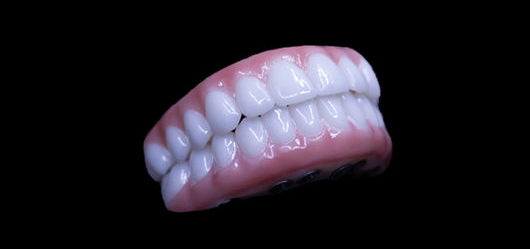Dental Sense Can Be Fun For Everyone
Dental Sense Can Be Fun For Everyone
Blog Article
Some Known Incorrect Statements About Dental Sense
Table of ContentsDental Sense Things To Know Before You BuyHow Dental Sense can Save You Time, Stress, and Money.Dental Sense for DummiesAbout Dental Sense
are medical tools surgically dental implanted right into the jaw to recover a person's capability to eat or their appearance. They offer support for fabricated (phony) teeth, such as crowns, bridges, or dentures. When a tooth is shed due to injury or illness, a person can experience problems such as quick bone loss, defective speech, or adjustments to eating patterns that cause discomfort.Oral dental implant systems contain a dental implant body and dental implant abutment and may likewise include an abutment addiction screw. Dental implants. The dental implant body is surgically placed in the jawbone in place of the tooth's origin. The dental implant abutment is usually connected to the implant body by the abutment addiction screw and extends via gums right into the mouth to sustain the affixed man-made teeth
(https://issuu.com/dentalsense1)Framework of The Oral Implant System selecting oral implants, talk with your oral supplier about the prospective advantages and dangers, and whether you are a candidate for the procedure. Points to think about: Your total wellness is an essential consider establishing whether you are a good prospect for dental implants, for how long it will certainly take to heal, and for how long the dental implant might stay in place.
Cigarette smoking might impact the recovery process and decrease the long-lasting success of the implant. The healing procedure for the implant body may take several months or longer, throughout which time you commonly have a momentary abutment instead of the tooth. the oral implant treatment: Thoroughly comply with the oral health guidelines given to you by your oral company.
The Definitive Guide to Dental Sense
Implant failure can cause the requirement for one more operation to deal with or change the dental implant system. Recovers the ability to chew Brings back cosmetic appearance Aids maintain the jawbone from diminishing due to bone loss Maintains the health of the bordering bone and gum tissues Assists keep adjacent (nearby) teeth secure Enhances lifestyle Damages to bordering all-natural teeth during dental implant positioning Injury to the surrounding tissues throughout surgery, such as sinus opening Injury during surgical procedure (as an example, crack of surrounding jawbone) Poor feature, such as seeming like the teeth do not attack with each other typically A sensation that the tooth is loosened or twisting in location arising from an abutment screw loosening Implant body failure (looseness of the implant body) as a result of systemic infection, which might be a lot more most likely in patients with unchecked diabetics issues because of neighborhood infection in bone and periodontals sustaining the dental implant body as a result of delayed healing, which might be most likely in people that smoke Difficulty cleaning up the gums around the dental implant, resulting in bad dental hygiene Without treatment periodontal disease Post-surgical numbness as a result of nerve impingement or damage Constantly alert health treatment suppliers and imaging specialists that you have oral implants before any type of magnetic resonance imaging (MRI) or x-ray procedures.
FDA is not knowledgeable about any kind of damaging events reported for MRI or x-ray treatments with dental implants. Oral implants systems are usually made of products that comply with worldwide consensus criteria of the International Organization for Standardization (ISO) or ASTM International. These criteria have details of what makes a safe material.

A dental implant is a structure that changes a missing out on tooth. With screw-like devices, the specialist inserts an implant into the jawbone, and it works as an anchor for a synthetic tooth, called a crown. A device called an abutment attaches the fabricated tooth to the dental implant. The crown is personalized to fit the person's mouth and match the shade of their teeth.
10 Easy Facts About Dental Sense Explained
Some people are not qualified for dental implant surgery. It is for dental surgeons to operate people with: severe illnessuncontrollable metabolic diseasebone or soft tissue condition or infectionIf these problems are settled, a person can have the surgery. In, oral doctors avoid operating people with: If individuals with any one of the above undergo oral implant surgery, there is a higher risk of the implant falling short.

Oral implant surgery is an individualized procedure. It's not the exact same for every person. However the complying with provides a general introduction of what you can anticipate your dental professional, oral cosmetic surgeon, periodontist or prosthodontist to do: Position the implant surgically. Provide you time to recover. Affix the article and last crown, bridge or denture.
Next, your specialist will thoroughly put the dental implant into your jaw. Your surgeon will certainly reposition your periodontals and shut the laceration with stitches. If your implant is near the front of your mouth, your dentist will certainly make a short-term tooth for you to use till you heal. That way, you won't have a gap in your smile while you recover.
An Unbiased View of Dental Sense
Your provider can inform you what to expect in your situation. Throughout the healing phase, your jawbone needs to fuse to the dental implant. This procedure, called osseointegration, is crucial for security and long-lasting success. This procedure can take anywhere from 3 to 9 months. In many cases, it may take much longer.
As soon as your implant heals, navigate here your dental practitioner can affix the abutment (tiny connector message) and your last reconstruction (crown, bridge or denture). This generally takes concerning one hour to finish and might require a second small surgical procedure. You should not really feel any pain during your oral implant treatment because your company will use medicine to numb your gum tissues.
Report this page